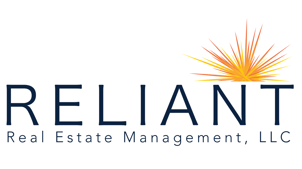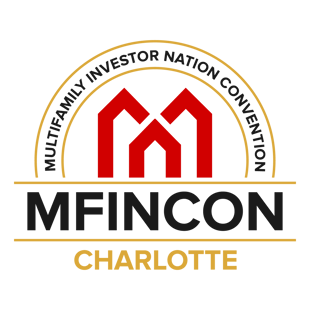Passive Investor Tips is a weekly series hosted by full-time passive investor and Best Ever Show host, Travis Watts. In each bite-sized episode, Travis breaks down passive investor topics, simplifying the philosophy and mindset while providing tactical, valuable information on how to be a passive investor.
Some people get scared when they hear the word ‘recession,’ but recessions are where so many millionaires and billionaires have made the majority of their money.
In this episode, Travis identifies the four stages of the commercial real estate market cycle — recession, recovery, expansion, and hyper-supply — and provides real-life examples to fully define each stage.
Click here to know more about our sponsors:


TRANSCRIPT
Travis Watts: Welcome back, Best Ever listeners. I'm your host, Travis Watts. This is Passive Investor Tips, which are tips, tricks, strategies, formulas, mindset, philosophy for you, the passive investor. And today's episode, what we're talking about are the four phases to the real estate market cycle, and why that's important.
Disclaimers as always - never financial advice; not telling you or anyone else what to do. Please seek your own licensed advice, and please do your due diligence.
So whether we're talking about stocks, bonds, oil, commodities, gold, silver, or crypto, whatever asset class, they have market cycles; things go up, things can go down, and stagnate sometimes. So we're going to be talking about the market cycle as it pertains to real estate.
The first two things to keep in mind for this episode is that there's always an opportunity, in my opinion, during each phase of the market cycle. Some people get scared when they hear the word "recession". Recessions are where so many millionaires and billionaires have made the majority of their money.
The second thing to keep in mind is that depending on the market that we're talking about, just realize that every market's different. Just because Orlando, Florida is in a certain stage of a market cycle doesn't mean that Roth, Oklahoma is in the same market cycle. Real estate at large, multifamily at large does not just go up and down at the exact same rate across the United States. Every market is different.
So with that, I'm going to quickly give you the four stages, then we're going to dive in and look at some examples. So the four stages to the market cycle are recession, recovery, expansion, and hyper-supply. What comes after hyper supply is we go right back to recession. Also, keep in mind that market cycles can take years and sometimes even decades to go through one complete cycle. So let's take a look at a few different examples.
So a market that would be in recession today - we're at the tail end of 2022, entering 2023, would be for example Oakland, California. Now, how do we know this? How do we know that Oakland, California is in recession? Well, we can look at the following factors that define the recessionary period. In a recession, there's usually increased vacancy, that means less units that are being rented, there's moderate to low new construction that's happening, there's a low absorption rate, which means that the units available are not getting filled up, there's low to negative employment growth, and there's low to negative rent growth.
Now, as we enter into the recovery phase, what you often see is decreasing vacancy, low new construction, moderate absorption rates, low to moderate employment growth, slow, but yet uptrending rental rate growth. And an example of a market that's in recovery today could be Seattle, Washington, just to use one example.
In the expansion phase, you'll often see things like decreasing vacancy, moderate to high new construction, high absorption rates, moderate to high employment growth, medium to high rental rate growth, and an example that's in expansion today would be Orlando, Florida, to name one of many.
And finally, that brings us to hyper supply, and the things that you look for in that phase of the market cycle would be increasing vacancy rates, moderate to high new construction, low to negative absorption rates, moderate to low employment growth, medium to low rental rate growth, and an example that's in hyper-supply today, one of many, would be Denver, Colorado.
Break: [00:05:05.23]
Travis Watts: As I mentioned earlier, there's opportunities to be had in each market cycle. So if we think about a recession, the good opportunity that comes in a recession is that you might get a larger discount or a lower purchase price on a piece of real estate, and then you could hold that potentially longer term, to where that market can turn into a recovery, and eventually an expansion phase, at which point you might look at selling.
The good thing about investing in a recovery phase is that the recession is now over, and you're starting to build the ground and foundation; that market's getting its footing back on the ground, and about to enter into expansion, hopefully, over the next few years.
Many markets right now are still in the expansion phase, the later stages of that especially, and that's a great opportunity if you want to dive into a high-growth market with really strong fundamentals currently.
When you enter into the hyper-supply stage, it may not be a good business plan to jump in and think that you're going to aggressively bump the rents way up, or that you're going to get in and get out really fast and do some kind of flip. This is a stage where you might look at a market that historically, over the long term, has solid fundamentals and tends to uptrend over the decades; a market for example, like San Francisco, California, which happens to be in hyper-supply today.
One major takeaway here for all investors listening is you want to know the property that you're buying or about to invest in, you want to know what phase of the market cycle it's in and what's about to come next, and you want to stack that up against the proposed business plan. So again, using the example of investing during a hyper-supply phase of the cycle may not be a good idea for short-term investors looking to enter and exit and flip something around in a short timeframe. You might instead choose to wait for the latter stages of the recession phase, or maybe the entry levels of the recovery phase, so that you have a shorter time horizon for high growth potential.
So something to think about here for today and for the week. I hope you've found some value in this short episode. These episodes here on Passive Investor Tips are fully intended to be five to seven minutes in length, very short, no fluff, right to the point, so I hope there is some value there for you.
If I can help you or anyone else learn the game of passive investing, please let's connect. I'm on social media on nearly every outlet out there, my name is Travis Watts. You can search at Passive Investor Tips on Facebook and Instagram. Have a best ever week, like, subscribe, comment, and we'll see you in the next episode.
Website disclaimer
This website, including the podcasts and other content herein, are made available by Joesta PF LLC solely for informational purposes. The information, statements, comments, views and opinions expressed in this website do not constitute and should not be construed as an offer to buy or sell any securities or to make or consider any investment or course of action. Neither Joe Fairless nor Joesta PF LLC are providing or undertaking to provide any financial, economic, legal, accounting, tax or other advice in or by virtue of this website. The information, statements, comments, views and opinions provided in this website are general in nature, and such information, statements, comments, views and opinions are not intended to be and should not be construed as the provision of investment advice by Joe Fairless or Joesta PF LLC to that listener or generally, and do not result in any listener being considered a client or customer of Joe Fairless or Joesta PF LLC.
The information, statements, comments, views, and opinions expressed or provided in this website (including by speakers who are not officers, employees, or agents of Joe Fairless or Joesta PF LLC) are not necessarily those of Joe Fairless or Joesta PF LLC, and may not be current. Neither Joe Fairless nor Joesta PF LLC make any representation or warranty as to the accuracy or completeness of any of the information, statements, comments, views or opinions contained in this website, and any liability therefor (including in respect of direct, indirect or consequential loss or damage of any kind whatsoever) is expressly disclaimed. Neither Joe Fairless nor Joesta PF LLC undertake any obligation whatsoever to provide any form of update, amendment, change or correction to any of the information, statements, comments, views or opinions set forth in this podcast.
No part of this podcast may, without Joesta PF LLC’s prior written consent, be reproduced, redistributed, published, copied or duplicated in any form, by any means.
Joe Fairless serves as director of investor relations with Ashcroft Capital, a real estate investment firm. Ashcroft Capital is not affiliated with Joesta PF LLC or this website, and is not responsible for any of the content herein.
Oral Disclaimer
The views and opinions expressed in this podcast are provided for informational purposes only, and should not be construed as an offer to buy or sell any securities or to make or consider any investment or course of action. For more information, go to www.bestevershow.com.




